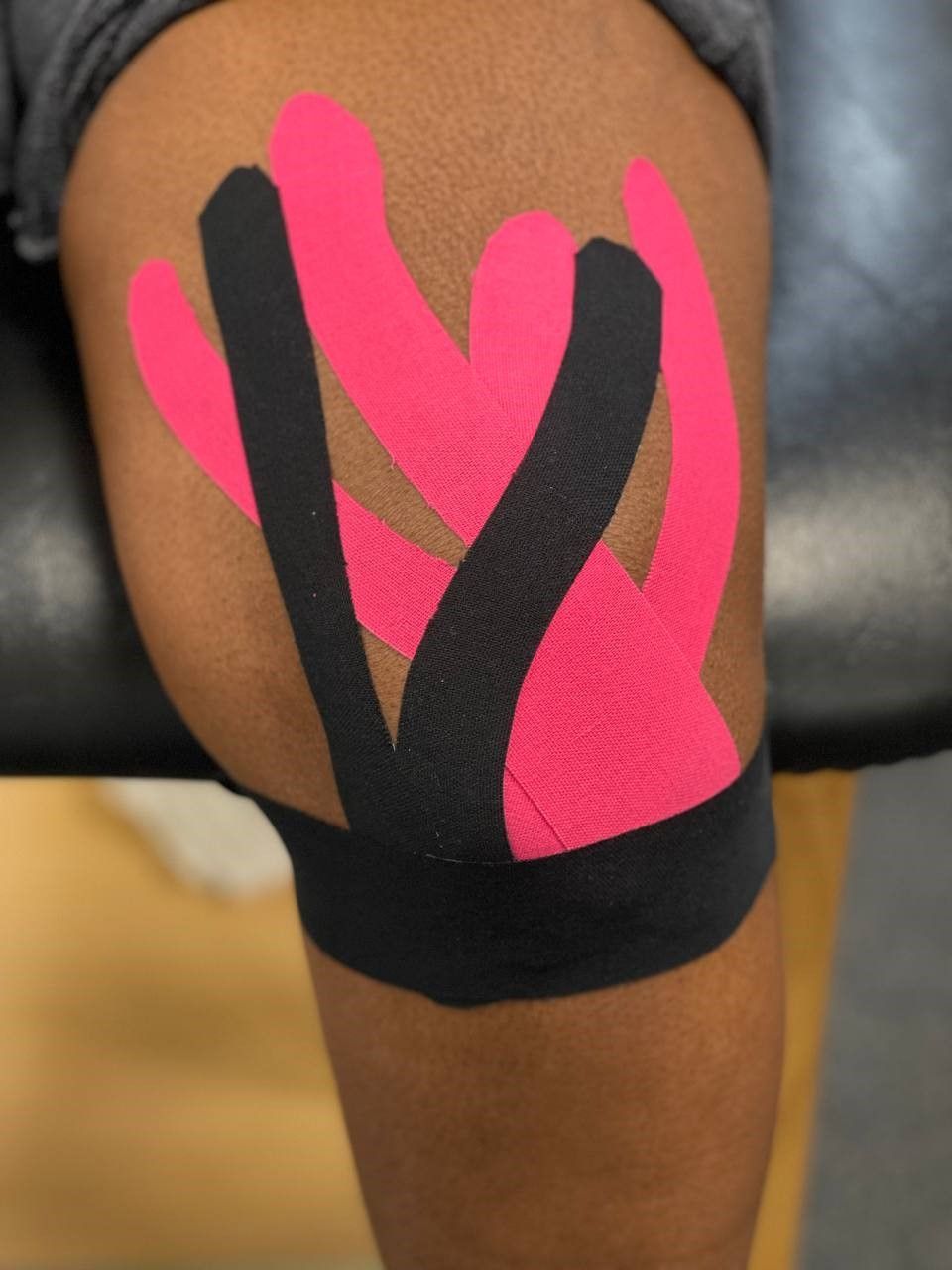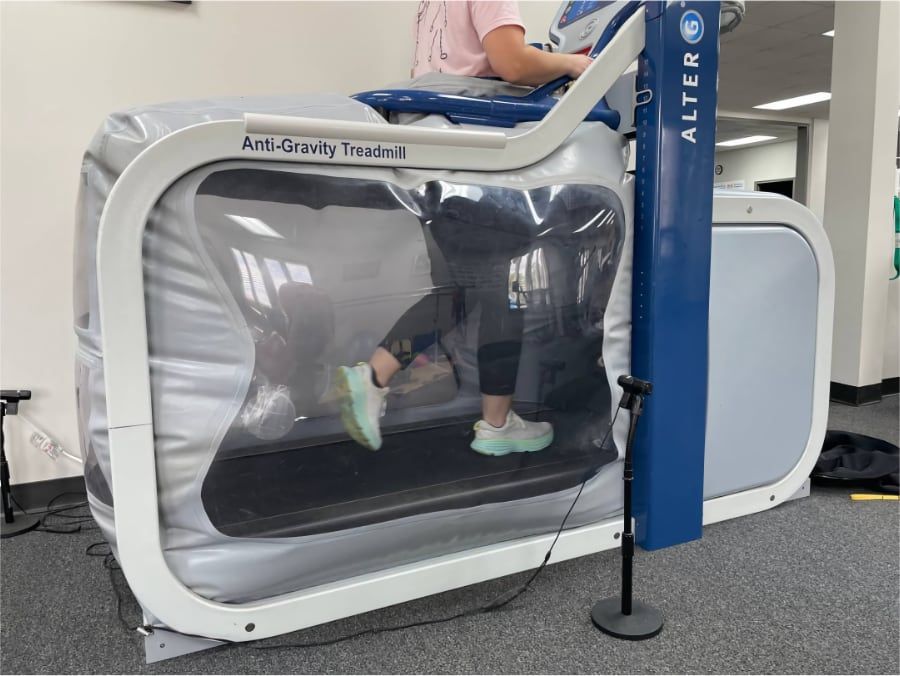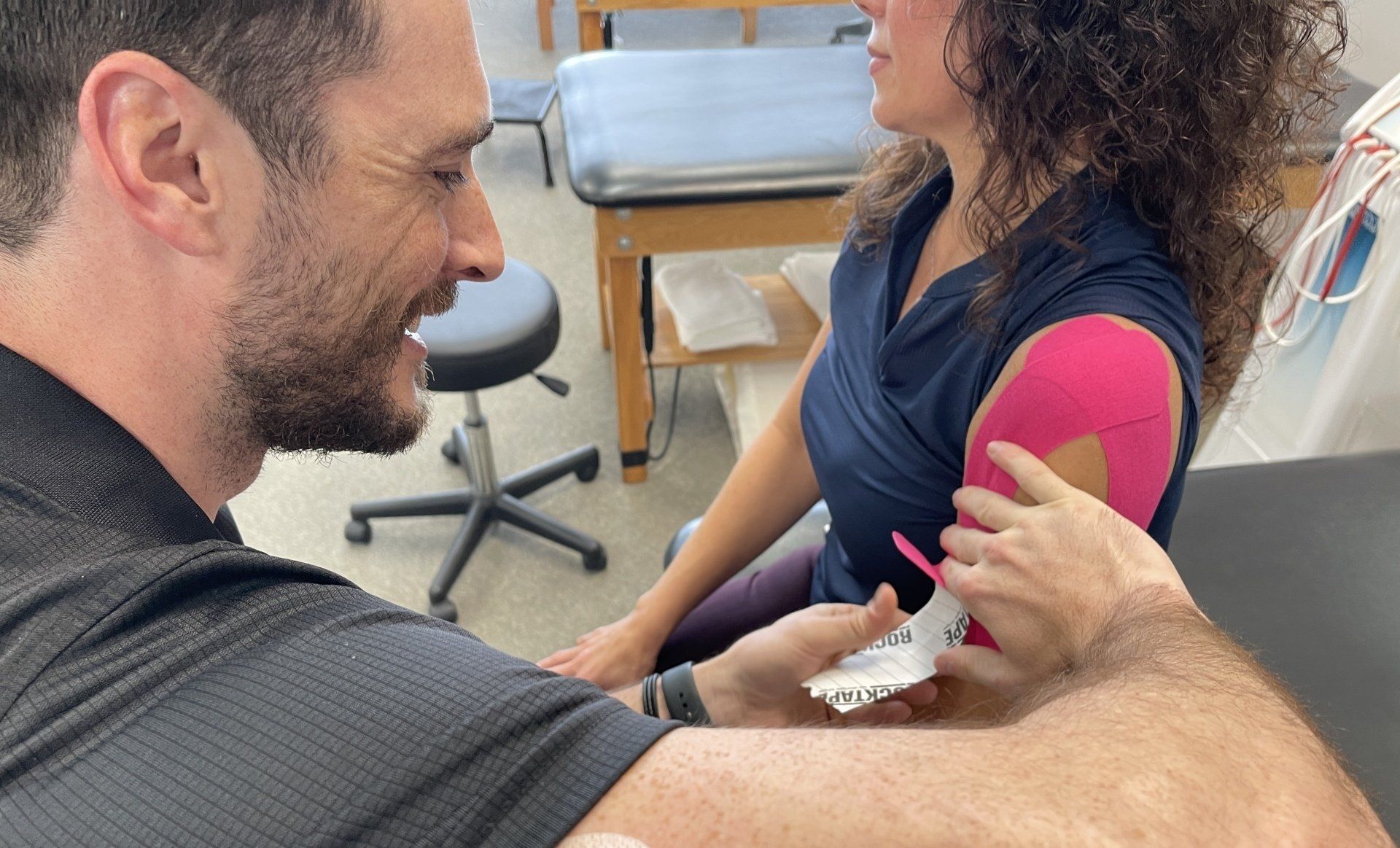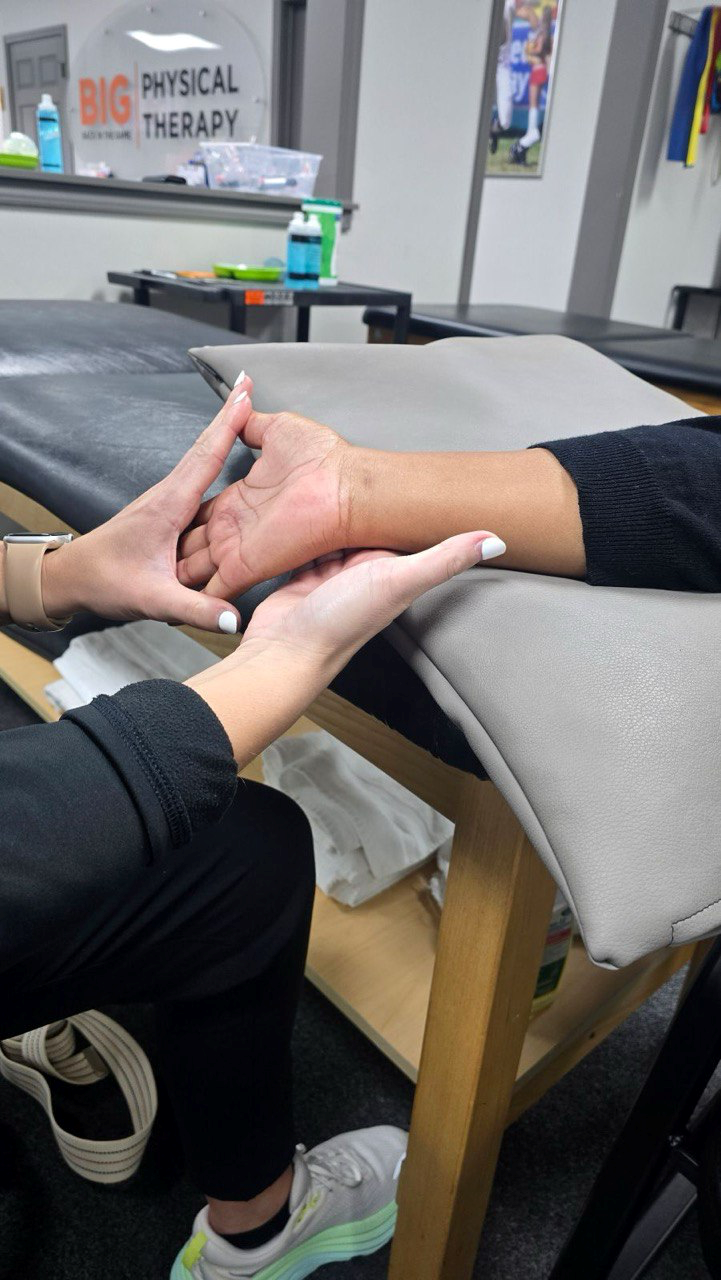Physical Therapy Services
Where Does It Hurt?
Who We Are
Resources
Benefits of Kinesiology Tape During Physical Therapy
Ever watched a sports event and noticed athletes wearing colorful strips of tape on their bodies? Or if you’ve looked closely at the gym you might’ve found someone sporting what looks to be a vibrant adhesive band.
That's kinesiology tape and it's not just a fashion statement!
In this guide we'll explore the benefits of kinesiology tape during physical therapy, dive into its therapeutic properties and show you how it can aid in the healing process. Let’s jump in!
What is Kinesiology Tape and Why Do Physical Therapists Use It?
Kinesiology tape (or KT) is a flexible elastic tape designed to provide support and stability to muscles and joints without restricting movement.
Physical Therapists (PTs) use KT as a valuable tool to treat musculoskeletal issues, help alleviate pain and optimize the body's natural healing process.
One of the reasons PTs love working with kinesiology tape is its versatility. Whether you're recovering from an injury post surgery or just looking to improve basic function KT can be customized and applied in many different ways to suit specific needs.
But how exactly does kinesiology tape work? In the next section we’ll uncover the magic behind this “therapeutic wonder” and look at various injuries that can benefit from KT application.
What Injuries Require Kinesiology Tape?
What is it that makes kinesiology tape such a popular choice for dealing with injuries, especially
after surgery? Well due to its unique properties it’s great for helping treat everything from sprains and strains all the way to muscle imbalances and joint instability. Let's look at specific injuries that require KT in greater detail.

- Sprains and strains: These common injuries can occur in everyday activities or sports. A sprain typically involves ligament damage whereas a strain refers to muscle or tendon injuries. Kinesiology tape helps by providing support and stability to the injured area reducing pain and swelling and promoting natural healing processes.
- Tendonitis: This condition is characterized by the inflammation of tendons, which connect muscles to bones. It often results from repetitive stress or overuse, such as in sports or work-related activities. KT can help alleviate pain and discomfort associated with tendonitis by providing targeted support improving circulation and allowing for reduced stress on the affected tendon.
- Postural issues: Poor posture can lead to muscle imbalances and discomfort over time. By using kinesiology tape to gently correct and encourage proper alignment PT patients can have reduced pain and improved function.
- Plantar fasciitis: This painful condition affects the plantar fascia, a thick band of tissue that runs along the bottom of the foot. It is typically caused by standing for extended periods running or wearing unsupportive footwear. Kinesiology tape can help relieve pain and discomfort by providing support to the arch of the foot and reducing stress on the plantar fascia.
- Muscle imbalances: When one muscle group is stronger or more developed than an opposing group, it can lead to instability and increased risk of injury. KT can help rebalance these muscle groups by encouraging proper movement patterns and providing additional support where needed.
- Joint instability: Some people might experience joint instability due to an injury or chronic conditions which may result in pain or discomfort. Kinesiology tape can be applied around joints to provide stability and support, helping reduce pain.
- Swelling and bruising: After an injury swelling and bruising are common and can hinder the healing process. Applying kinesiology tape can reduce swelling by improving lymphatic drainage and promoting better circulation.
There's no question that kinesiology tape is versatile and effective as a tool in addressing a range of injuries.
By providing targeted support improving circulation and encouraging proper movement, kinesiology tape can alleviate pain and discomfort while speeding up the healing process.
What are the Benefits of Kinesiology Tape?
Kinesiology tape has numerous benefits that range from pain and cramp relief all the way to improved circulation, which is why you’ll likely see it in your next physical therapy appointment.
In this section we'll take an in-depth look at the benefits of KT and why it’s such an effective treatment tool that physical therapists use to support their patients' rehabilitation.
Pain Relief
One of the primary benefits of kinesiology tape is its ability to provide pain relief. When the tape is applied correctly it gently lifts the skin away from your underlying muscles and fascia which creates a decompression effect.
This action reduces pressure on pain receptors in the area helping to alleviate discomfort.
Kinesiology tape also promotes improved blood flow and lymphatic drainage which can help flush out inflammation and reduce pain.
Improves Circulation
Kinesiology tape can improve circulation by facilitating better blood flow in the area where it is applied. The lifting action of the tape encourages increased movement of blood and lymphatic fluid, which can help promote healing and reduce swelling.
This can lead to faster recovery from injuries and help your body get rid of toxins more effectively.
Creates Space in Joints
Another incredible benefit of kinesiology tape is its ability to create space in your joints. When applied correctly the tape lifts the skin reducing pressure on the joint structures.
This space can alleviate pain, prevent excessive joint compression and promote a better range of motion.
Prevents and Relieves Cramping
Cramping and muscle spasms can be painful and disruptive to daily life. KT can help with this by encouraging better muscle activation and providing gentle support to the affected area.
The tape's elastic properties allow for a gentle stretch that can help relax tense muscles reducing the risk of cramps and relieving any existing discomfort, and help make physical therapy more effective.
Accelerates the Recovery of Muscle
Kinesiology tape can also help accelerate muscle recovery by supporting natural healing processes. The improved circulation this tape provides can help deliver essential nutrients to injured muscles while also flushing out waste products that accumulate due to inflammation or tissue damage.
KT can help reduce muscle fatigue by providing support and reducing stress on overworked muscles.
About the Author
Sarah Keeney
PTA
Specialties: Sport specific injuries and physiological/neurological conditions
Certifications: Champion Performance Specialist (C-PS)
Location(s): Flowery Branch, GA
Contact
Request an appointment






